On June 19 evening West Bengal Chief Minister and Trinamool Congress supremo Mamata Banerjee conveyed something politically significant in her tweet congratulating the Congress leader Rahul Gandhi on his 54th birthday. Her tweet said ‘Best wishes on your birthday, Rahulji. Wishing you good health. May you have a terrific period next year’.
A birthday wish is normal among the political leaders of the country, Mamata had earlier also sent birthday wishes to both Rahul Gandhi and his mother Sonia Gandhi, but this time, her last line of the tweet sent on Monday was something unusual. She wants Rahul Gandhi to have a terrific year in 2024. What does it mean? 2024 is the year of Lok Sabha elections and all the anti- BJP opposition parties are meeting on June 23 at Patna to discuss a common strategy to remove the BJP led NDA from power. Just three days before that crucial conclave, Mamata wishing for a ‘terrific period’ for the Congress leader only means that the TMC supremo wants Rahul to achieve success in that year.
In other words, Mamata wants the Congress to stage a comeback after the 2024 Lok Sabha polls with Rahul Gandhi as the head and also possibly as the Prime Minister candidate of the Congress party and eventually the opposition front. Mamata is a shrewd politician with her eyes and ears rooted to grassroots. Her latest tweet suddenly signals a change in her attitude to both the Congress Party and Rahul Gandhi. This can act as a game changer at the coming opposition conclave at Patna next Friday.
Now let us deal with the real issues that have to be sorted out by the opposition leaders at the conclave on June 23. In the last five weeks since the Congress Party’s impressive victory in the Karnataka assembly elections, some major developments have taken place denting further the image of the Prime Minister Narendra Modi and his second in command Home Minister Amit Shah. The tragic developments in Manipur have not only shown the BJP administration in Manipur and the centre in poor light , the ethnic clashes and the factors behind the riots have exposed the BJP party in general, in Manipur as also in the entire North Eastern region.
These developments will have its impact on the Lok Sabha elections in 2024. The region has a total of 25 seats including 14 from Assam. The BJP regional commander of the NE zone Assam Chief Minister Himanta Biswa Sharma has been accused of involvement in riots and the main opposition parties of the region including a few regional parties have demanded the arrest of the Assam CM. In sum, the BJP is vulnerable in these 25 seats. The Christians are totally alienated from the BJP in the region and that gives a good scope to the Congress as the main anti-BJP political party in the region to take the lead in opening dialogue with the regional parties which are disillusioned with the BJP. The conclave must focus on framing a special strategy for the NE region in the context of the 2024 Lok Sabha polls.
NCP supremo Sharad Pawar will be attending as the senior most leader in the conclave with wide experience in dealing with the difficult work of stitching alliances. He has to set the ball rolling in focusing on a few fundamentals to ensure that the proposed alliance can include maximum number of non-BJP parties committed to a common minimum programme. The participating parties have to agree that the alliance will vary from the state to state depending on the political reality on the ground and accepting the right of every party to contest assembly elections. The opposition strategy should focus on the best formula to avoid division of anti-BJP votes in 2024Lok Sabha polls.
On the eve of the Patna conclave, there is an optimistic mood in the opposition camp as after a long gap, there is a new narrative taking root in the country that the BJP can be defeated despite the magic of Modi. But even a favourable environment can go haywire if the opposition leaders go ecstatic and ignore some of the hard realities, while undertaking discussions on alliances. Some sources say that the Bihar CM as the host is proposing one-on-one fight between BJP and the opposition in 475 out of the total of 543 Lok Sabha constituencies. Nitish must have made his own studies. But the political reality is that there cannot be any uniform formula of alliance applicable throughout the country. It will vary from state to state. The regional parties will not give up their power bases to a national party just for the sake of defeating BJP in Lok Sabha elections. These parties will take care of their future also.
So that way, the best course for the opposition is to divide the states into different categories and make all efforts to avoid the division of the anti-BJP votes in the Lok Sabha elections. What should be kept in mind is that this strategy should be applicable only for Lok Sabha elections. In the coming state assembly elections, the Congress and the regional parties may contest against each other, as also BJP, to identify their respective strength, on the basis of which negotiations can take place for seat-sharing before the Lok Sabha elections.
The first category should include the states where the opposition alliance is already working. These are Bihar, Tamil Nadu, Jharkhand and Maharashtra. Out of these four, the opposition is ruling in the first three. In the fourth state, Maharashtra, the MVA is working fine. If the leaders feel like it, they can co-opt the two left parties CPI and the CPI(M) for further strengthening the MVA.
The second category include the states where the Congress is the main challenger to the BJP. In these states, the Congress will be the decider in respect of alliances. These states are Madhya Pradesh, Rajasthan, Chhattisgarh, Karnataka, Gujarat, Himachal Pradesh, Uttarakhand and Haryana. Now, the Congress has 52 seats in Lok Sabha and in 2019 polls, the Congress was second in 209 seats. So the Congress has the full right to contest in minimum 261 seats out of 543 seats in Lok Sabha. Even if the Congress has a striking rate of 60 percent on the basis of one on one formula against the BJP, the Congress seats may come to 156 seats. The figure is three times the present tally of the Congress in Lok Sabha
The third category comprises states where the regional parties will fight both the Congress and the BJP, since the regional parties are stronger there. These states are West Bengal, Kerala, Punjab, Delhi and Telangana. In Bengal, it will be futile to try for the one-on-one formula. The recent nominations process of the panchayats in Bengal have shown how antagonistic are the relations of TMC with the other two parties belonging to the opposition camp, the Congress and the Left Front. Just as the Congress will fight with the Left Democratic Front in Kerala in Lok Sabha polls, in Bengal also, it is better that TMC fights separately against the BJP. The Left Front and the Congress may also fight jointly against both the TMC and the BJP.
In Punjab and Delhi, it will be difficult for AAP and the Congress to come to any understanding against the BJP. There is every possibility that the AAP and the Congress will fight separately. In Kerala, the Left Democratic Front and the Congress will fight for the Lok Sabha seats. Left will make all efforts to raise its tally, but in any case, both the Congress and the Left are part of the opposition. So the total seats will remain the same. In Telangana, the BRS will fight against both the BJP and the Congress. BRS is not attending the June 23 conclave. So it seems that its grouse against the Congress remains. The regional leaders of the opposition have to bring BRS to their side after the Lok Sabha elections. BRS leader K. Chandrasekhar Rao is in touch with Mamata. He is reported to have told the TMC supremo that he will be a part of anti- BJP front for Lok Sabha polls, but in the coming assembly polls in Telangana, He will be fighting both the Congress and the BJP. So he is not joining the June 23 meeting along with the Congress.
The fourth category of states comprises Andhra Pradesh and Odisha. These ruling parties are not with the opposition. The Congress will fight in these states against both the respective regional party — YSRCP in AP and BJD in Odisha — apart from the BJP. It is the duty of the regional leaders, especially Nitish Kumar and Mamata Banerjee, to persuade them to support the opposition after the Lok Sabha elections, if there is a hung Lok Sabha.
A regards the NE states, in Tripura, the Left Front led by the CPI(M) will be the main party of the opposition challenging the BJP. Tripura has two seats. Both belonging to the BJP. But if the Congress Left can arrive at an understanding with the tribals outfit Tipra Motha, the joint front can easily defeat the BJP in Lok Sabha polls and annexe both the seats. In other 23 seats of the NE region, including Assam, the Congress has to take the lead in uniting the non- BJP parties in the Lok Sabha polls. Assam has 14 seats and the other states with large Christian population, have nine seats together.
Uttar Pradesh is a separate case. Samajwadi Party is the leading opposition party fighting the BJP in the state. UP has 80 Lok Sabha seats. Already Amit Shah has set the target of 70 seats for the state BJP, which has launched a vigorous campaign against the main opposition SP. BJP is also trying to stitch alliances with the smaller parties of OBC group. Congress is still not a relevant force in the state, getting only just above 2 percent votes in the last state assembly elections. SP can negotiate with the Congress if it wants and if there is some understanding, that will be good for opposition. But Rahul Gandhi may have long term ideas for rejuvenating the party in UP by spreading the organization through Lok Sabha polls. If that happens, SP can fight the BJP with its own alliance excluding the Congress. The political reality has to be accepted.
The June 23 meeting will be only the first but step towards the process of achieving the unity of the opposition parties before the 2024 Lok Sabha elections. The focus in this meeting will be on the areas where the parties agree. Some basic principles can be agreed upon for taking forward the seat sharing policy for the Lok Sabha elections. The process will not be smooth, more such meetings will be needed. But once there is a clear understanding that these opposition parties are united in removing the saffrons from power in 2024 Lok Sabha polls, the framing of road map will be easier. (IPA Service)
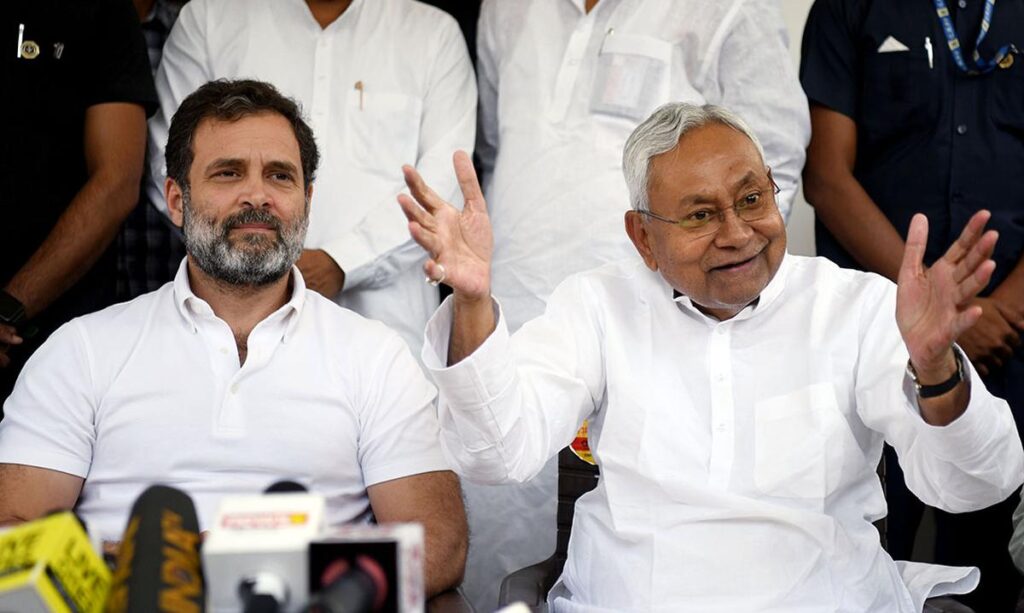
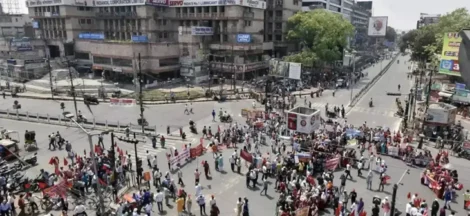
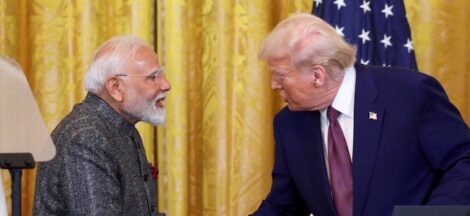
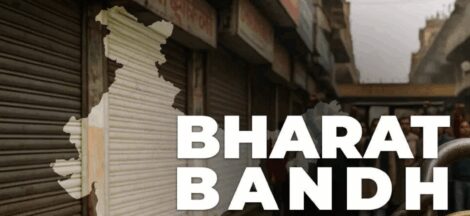
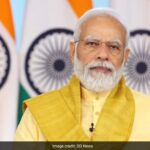 PM to lead yoga event in New York, stresses practice’s reach
PM to lead yoga event in New York, stresses practice’s reach 